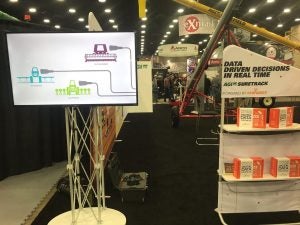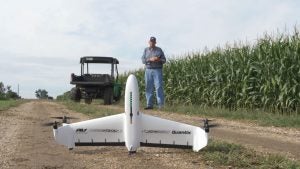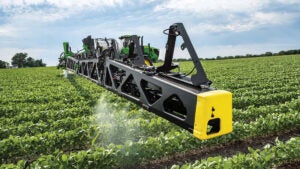Agriculture is ever evolving with the latest innovation, technology, and science that humans have developed. Farming today looks much different than it did 100 years ago, and our modern crops are likely alien compared to the proverbial “first” plant ever cultivated. As time marches on, farmers continue to change and adapt.
But not every new innovation goes mainstream. Just as in any other industry, some ideas aren’t adopted, some are squashed by bigger companies, and some just aren’t that good. Often new products are debuted to much attention and fanfare, only to disappear without a trace. So, what happened?
We’ll take a trip down memory lane to reminisce about some of the splashiest new equipment of the past decade — and discover what happened after the headlines faded.
Farmobile

Farmobile, a pioneering startup in agricultural technology, embarked on a mission to democratize data collection on the farm. The idea was to empower farmers by giving them direct control over their valuable data.
Founded in 2013, Farmobile’s electronic device could seamlessly transition between various farm machinery — from tractors to sprayers — while diligently gathering machine and agronomic data. The technology simplified data collection and provided a comprehensive strategy to collect, share, and monetize that data. The fact that the farmers could collect data from multiple machines in real time meant an unprecedented level of insight into operations as the work was performed.
Farmobile was heralded as a game-changing solution to the farm-data crisis. It gave farmers control over their own data and allowed them to choose what they shared with industry partners. It also featured a way for farmers to monetize that valuable data directly.
The technology was showcased at the 2020 Farm Machinery Show, among other places. But shortly after that, it was acquired by another large agriculture company. According to the Kansas Secretary of State, the entity was merged out of existence. Ag Growth International, once a minority shareholder of the company, purchased its remaining shares in 2022. AGI now sells the Farmobile technology as part of its vast array of farm infrastructure products.
AeroVironment’s Quantix UAS

AeroVironment, a California-based company with roots in military drone technology, was set to revolutionize agriculture with its innovative hybrid craft, Quantix. Unveiled at the 2017 National Farm Machinery Show, Quantix merged the capabilities of fixed-wing UAVs and quadcopters, offering farmers the best of both worlds. The hybrid drone’s comprehensive approach also included software and a mobile app, providing users with real-time insights into crop health, as well as advanced analytics and data security.
Designed with the user experience in mind, Quantix boasted seamless adaptability and intuitive operation. Quantix streamlined the aerial scouting process with its fully automated system, eliminating the need for manual flight planning. With just basic input from the user, such as field location and weather conditions, the drone autonomously conducted flights covering up to 400 acres in a single battery charge. The Quantix was available for producers through three product packages that ranged from $5,500 to $16,500, and its advanced image processing and data analytics included True Color, NDVI, GNDVI, canopy coverage, anomaly detection and more.
I reached out to the company to inquire more about it, but never got a response. AeroVironment announced in January 2023 that is was going to begin phasing out commercial production of the Quantix line, which by all accounts never gained momentum in the agricultural sector. AeroVironment is still in operation, with its major focus on military technology. The Quantix for farming is no longer featured on the company’s website.
Blue River

Blue River’s see-and-spray technology is one of the most exciting innovations. This innovative method employs robots equipped with advanced cameras and machine-learning algorithms to differentiate between crops and weeds with remarkable precision.
The concept is simple yet impactful: As these intelligent bots traverse the fields, their sensors identify unwanted weeds amid the crops. Once detected, the robots swiftly administer targeted doses of herbicides directly onto the offending plants, effectively minimizing herbicide usage and mitigating the risk of herbicide resistance.
What sets see-and-spray technology apart is its adaptive nature. These robots possess the capability to discern healthy crops from pesky weeds. If a plant is identified as healthy, the robot can be programmed to administer fertilizer instead of a herbicide, optimizing nutrient delivery and promoting crop growth.
The technology’s potential impacts are obvious. With these little robots roaming the fields, they can apply herbicides or fertilizers only where needed. Farmers would have to use less chemical inputs, potentially lowering costs and increasing yields — all things we love!
John Deere purchased Blue River Technology in 2017. I reached out to see whether the company has implemented the see-and-spray technology, and how it has evolved since the acquisition. Today the see-and-spray technology comes factory-installed on the brand’s new Hagie STS Sprayer, which was launched earlier this month. Although the technology isn’t used on a freely roaming robot, it can be added to a conventional sprayer to get the same precise herbicide application.
Innovation of the future
Reflecting on these technology advancements, we’re reminded that there is an evolutionary process from concept to drawing board to the field. When technology, science, and practical experience come together, we can watch small start-up companies creating innovations that interest even the biggest agriculture companies.
Amanda Zaluckyj blogs under the name The Farmer’s Daughter USA. Her goal is to promote farmers and tackle the misinformation swirling around the U.S. food industry.



